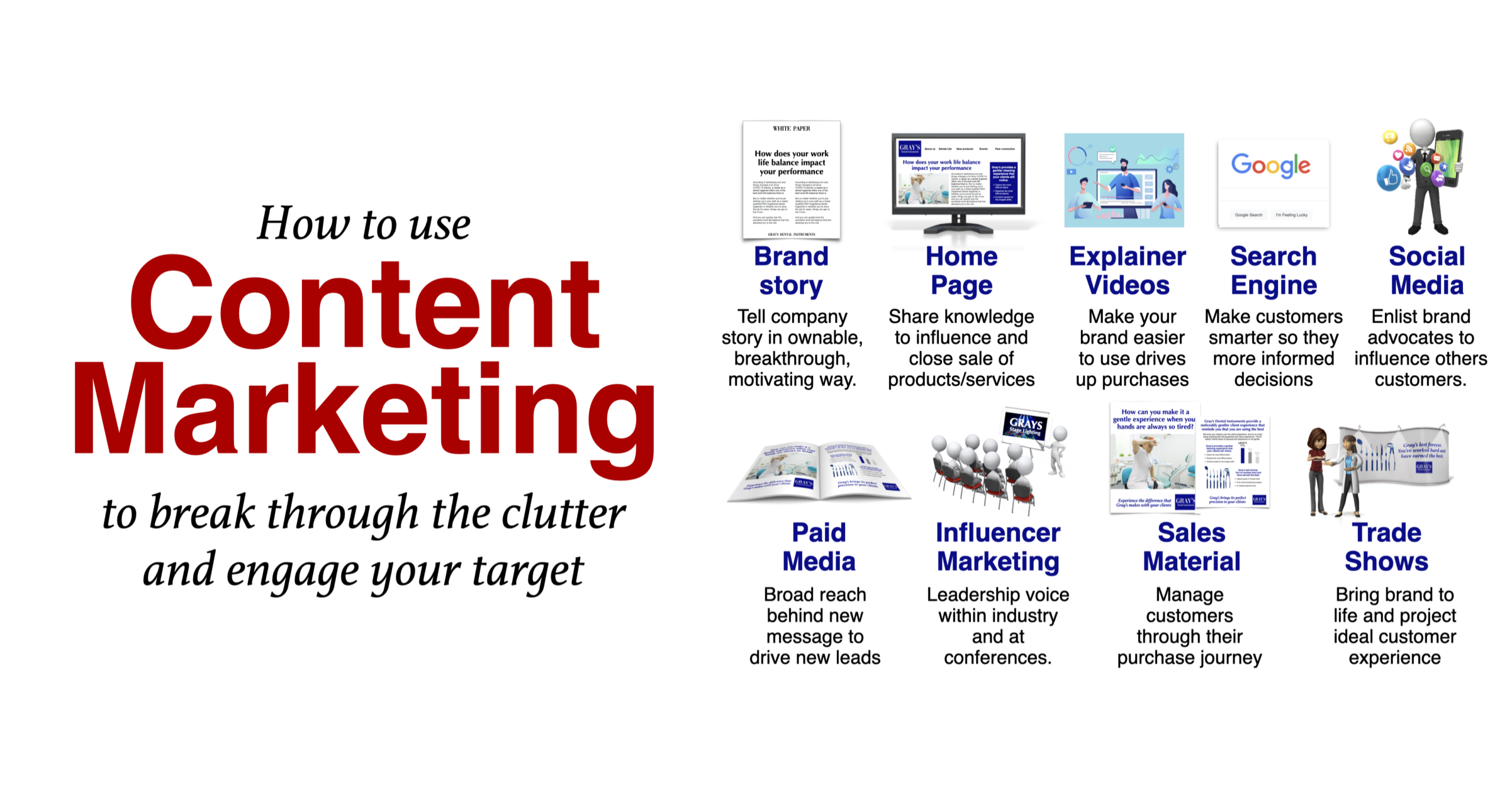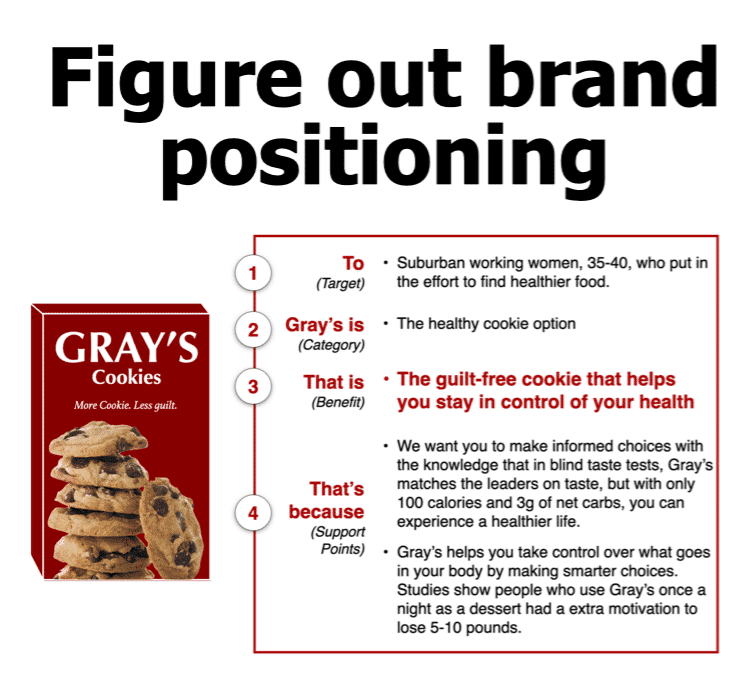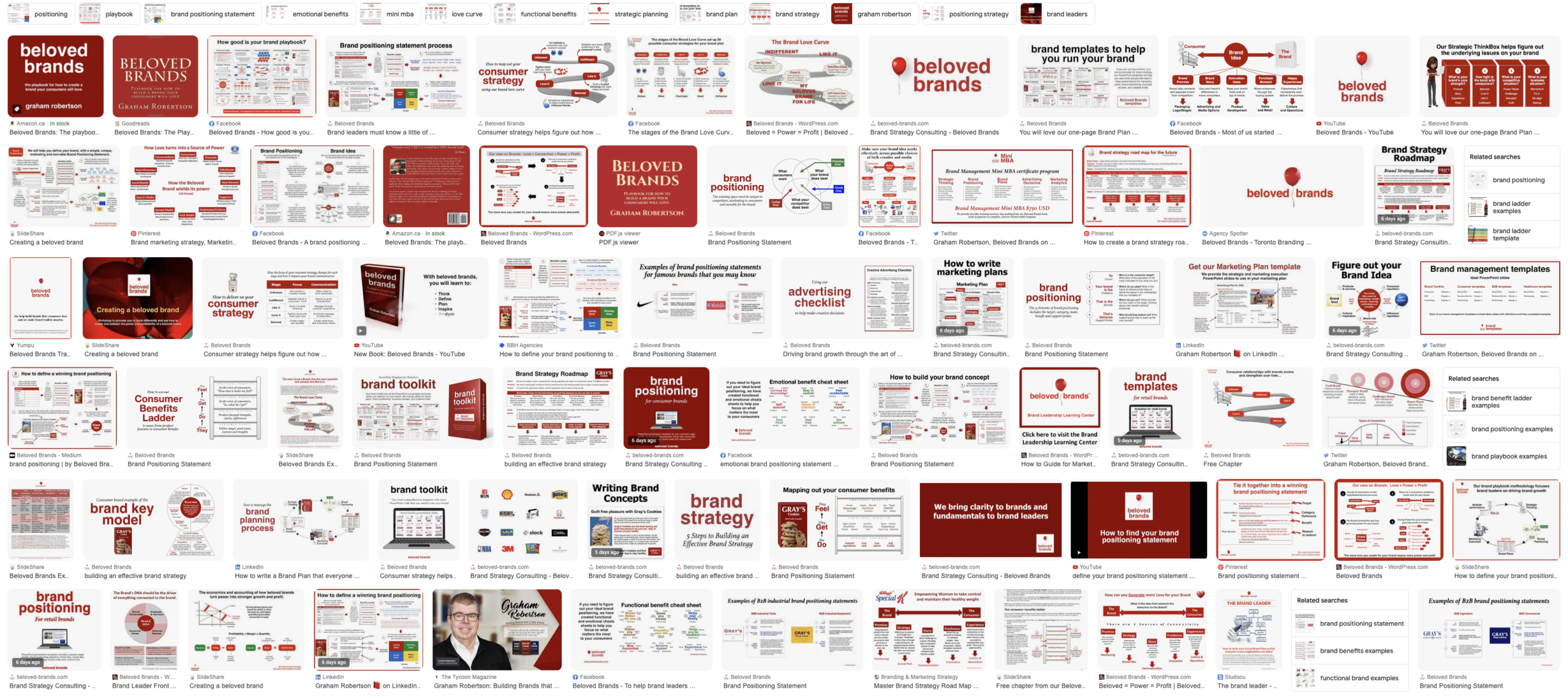Master the art of crafting compelling content marketing that rises above the noise. First and foremost, content marketing has become an essential tool for businesses seeking to rise above the noise in today’s digital landscape. With consumers constantly bombarded by content, it’s crucial to create engaging and valuable material that captures their attention. This in-depth guide will explore various types of content marketing and provide actionable tips for brand managers to create standout content. Additionally, we’ll offer ideas for visuals and examples of successful campaigns. Let’s delve into the world of content marketing and learn how to cut through the clutter.
The power of the blog
Undeniably, blogging is a fundamental component of content marketing. High-quality, informative, and engaging blog posts can generate organic traffic, position your brand as a thought leader, and foster customer loyalty.
Essentially, blogs are a versatile and effective type of content marketing that allows you to showcase your brand’s expertise, share valuable information, and connect with your audience.
To create blog posts that break through the clutter:
- First, identify your target audience’s needs and preferences.
- Next, develop a consistent publishing schedule.
- Then, optimize your content for SEO.
- Finally, include visuals, such as infographics, images, and videos.
Focus your content marketing on key topics that are easy to read and easy to find
Think of your home page as the front door of your business. Use a blog to educate your customers. Try to focus on and own 5-6 topics that fit your brand. You need to optimize your web pages to make it easy for Google to crawl and index. Ensure that your content, layout, and code are all up-to-date so that Google can understand what your website is about and how it fits with answering queries from their users.
On-page optimization (easy to read)
- Many factors impact optimization including word count, title tags, H1 titles, meta descriptions, security of your site, site speed for desktop and mobile.
- Domain Authority (DA): score from 1-100 that predicts how well a website will rank on Google search results. Created by Moz.
- Search engine result pages (SERPs): ranking factors that determine order to rank web pages in their SERP.
Off-page optimization (easy to find)
To illustrate, click on the diagram to view.
You have to start some where
In 2011, I embarked on my Beloved Brands blog journey. Like many others, I initiated the blog spontaneously after a friend suggested it as an excellent platform for expressing my thoughts. As a result, I started writing about whatever crossed my mind.
My first article garnered about ten readers, while the second one attracted just over 100. The blog’s growth accelerated exponentially after around six months of writing. Within a year, the monthly readership of 1000 increased to 1000 a week and eventually reached 2000 daily visitors.
In the beginning, I lacked knowledge about SEO. If I had the chance to start anew, I would select 5-6 keywords to rank for and create content targeting each keyword. It was only after a few years that I discovered my blog had earned a spot on Google’s first page.
Ultimately, I ended up ranking for:
You don’t have to pick a huge topic to rank high. Focus on what you are best at and what makes the most sense for your audience.
To illustrate, click on the either of the buttons to view.
Harnessing the power of social media
Secondly, social media platforms offer unparalleled opportunities to connect with your audience and share your brand story. To maximize your social media content marketing efforts:
- First, Create a content calendar to plan and schedule your posts.
- Next, engage with your audience through comments and direct messages.
- Utilize platform-specific content formats, such as Instagram Stories and LinkedIn articles.
- Finally, share user-generated content to build authenticity and trust.
Aligning your marketing content and social media
Content marketing has become a powerful tool for businesses and individuals to harness the power of social media. By creating valuable, engaging, and shareable content, you can reach new audiences, enhance brand visibility, and drive user engagement. In this increasingly digital world, content marketing has emerged as an essential component of social media strategies for both small and large enterprises.
One of the primary reasons content marketing works so well on social media is its ability to foster genuine connections with the target audience. By creating content that resonates with their needs, preferences, and aspirations, you can cultivate lasting relationships with your followers. This connection not only leads to increased brand loyalty but also turns your audience into brand advocates who willingly promote your content to their networks.
Make sure your content fits with the social media tool you use.
Another advantage of using content marketing on social media is the opportunity to tailor your content to specific platforms. Each social media channel has its unique set of features and user preferences, which allows you to customize your content to maximize engagement. For example, you can create short, attention-grabbing videos for TikTok or Instagram Reels, while focusing on in-depth articles and thought leadership pieces for LinkedIn.
User-generated content (UGC) is another powerful content marketing tool that can be leveraged on social media. By encouraging your followers to create and share content related to your brand, you can tap into their creativity, passion, and influence. UGC often results in highly shareable content that has the potential to go viral, further amplifying your brand’s reach and visibility.
Involving your followers
Collaborating with influencers is another effective way to capitalize on content marketing in social media. By partnering with influencers who align with your brand values and audience, you can create authentic content that resonates with their followers. Influencers bring credibility and trust to your brand, as their audience already values their opinions and recommendations.
Moreover, content marketing on social media provides ample opportunities for audience interaction and engagement. By encouraging comments, likes, shares, and direct messages, you can foster a sense of community around your brand. This two-way communication can provide valuable insights into your audience’s preferences and needs, enabling you to refine your content strategy accordingly.
Finally, content marketing on social media offers an invaluable opportunity to track and measure the effectiveness of your campaigns. By using analytics tools, you can gain insights into content performance, user demographics, and engagement metrics. This data-driven approach allows you to optimize your content strategy, ensuring continued growth and success.
Video Marketing: A Game-Changer
Furthermore, video marketing has emerged as a powerful content marketing tool. As consumers increasingly gravitate towards visual content, businesses and individuals are harnessing the power of video to engage their target audience, enhance brand visibility, and drive conversions. Video marketing offers a unique combination of visual storytelling, compelling narratives, and interactive features, making it an essential component of any successful content marketing strategy.
To create impactful video content:
- First, develop a clear, concise, and compelling message.
- Next, keep your videos visually engaging and relevant to your audience.
- Then, optimize your video content for SEO and mobile viewing.
- Finally, share your videos across multiple platforms, including your website, social media channels, and email marketing campaigns.
One of my favourites is Neil Patel who has a ton of great content. Sign up for his great Ubbersuggest SEO material.
To illustrate, click on the YouTube arrow to view.
Videos help with the limited attention span of those who prefer to watch than read
One of the primary reasons video marketing is so effective is its ability to capture and retain the viewer’s attention. In an era of information overload, capturing the audience’s interest has become more challenging than ever. Video content, with its dynamic visuals and immersive storytelling, has a unique ability to engage viewers, keeping them glued to the screen and more likely to absorb the message.
Another significant advantage of video marketing is its versatility. From short-form content on social media platforms like TikTok and Instagram Reels to long-form educational videos on YouTube or Vimeo. You can use video marketing to cater to your audience. This flexibility allows businesses to create video content that aligns with their target audience’s needs and consumption habits, thereby maximizing reach and engagement.
Video marketing also offers excellent opportunities for personalization and targeting.
Using advanced technologies like artificial intelligence and data analytics, marketers can create highly personalized video content that caters to individual user preferences and behaviors. This level of personalization not only enhances user experience but also increases the likelihood of conversion. Ensure the content feels more relevant and engaging to the viewer.
In addition to personalization, video marketing allows for the seamless integration of interactive elements. Use clickable links, calls to action, and quizzes. These interactive features not only enhance user engagement but also create a more immersive and memorable experience. By incorporating interactive elements, you can drive users to take specific actions.
Make your content marketing videos shareable
Finally, video marketing is inherently shareable, making it the perfect vehicle for viral content. As users are more likely to share engaging and entertaining video content, businesses can harness the power of social media to extend their reach, boost brand awareness, and create a buzz around their products or services.
Infographics simplify complex concepts
Infographics have become an increasingly popular content marketing tool in recent years. They simplify complex concepts and convey information in an easily digestible, visually appealing format. By combining eye-catching design elements with succinct text, infographics can break down intricate ideas into accessible, engaging content that appeals to your audience.
The following strategies outline how to effectively use infographics to simplify complex concepts.
- To start, focus on a single, well-researched topic.
- Next, use a visually appealing and easy-to-follow design.
- Then, incorporate your brand’s colors and fonts for consistency.
- Finally, share your infographics on social media, blog posts, and other content platforms.
Build a consistent look and feel
With everything you do, make sure you stick to your own brand standards. Try this great exercise that someone recommended to me. Google your own brand and go into the images section and take a look. Below is what I see when I type in Beloved Brands. Red and white. Similar look. Try it on your own brand.
To illustrate, click on the content marketing diagram to view.
How content marketing can work for you
In conclusion, content marketing presents numerous opportunities for brand managers. By utilizing diverse content types, you can engage your target market effectively. These types include blogging, social media, video marketing, webinars, podcasts, email marketing, and infographics. Furthermore, focusing on audience needs and preferences is crucial. Equally important, prioritize consistency, authenticity, and value. Ultimately, with these principles, content marketing success awaits you.
M A R K E T I N G B O O K
beloved brands
the playbook for how to create a brand your consumers will love
Covering every aspect of brand management, it is no wonder that our readers reach for Beloved Brands multiple times each week to guide them through the challenges of day-to-day brand management.
Get ready for a mind-bending journey as we take you on a deep dive into your brand strategy. We’ll challenge you with thought-provoking questions designed to shake up your thinking and help you see your brand in a whole new light. And our unique process for defining your brand positioning will leave you with fresh ideas and new possibilities for how to differentiate your brand.
But we won’t just leave you with ideas – we’ll show you how to turn them into action. Learn how to write a brand plan that everyone can follow, ensuring that all stakeholders are aligned and contributing to your brand’s success. We’ll walk you through the creative execution process, from writing an inspiring brief to making smart and breakthrough decisions.
And when it comes tao analyzing your brand’s performance, we’ve got you covered. Our innovative methods will help you dive deep and uncover insights you never knew existed, giving you the knowledge you need to make the best decisions for your brand’s future.
But don’t just take our word for it – our Amazon reviews speak for themselves.
With over 85% of our customers giving us a glowing five-star rating and an overall rating of 4.8 out of 5.0, we know we’re doing something right. And with numerous weeks as the #1 bestseller in brand management, you can trust that we have the experience and expertise to help you achieve success.
Ready to join the ranks of the Beloved Brands community? Order our book on Amazon, Rakuten Kobo, or Apple and start your journey towards brand success today.
Take a read through our sample chapter on strategic thinking
Marketing Careers
On a classic marketing team, there are four key levels:
- Assistant Brand Manager.
- Brand Manager.
- Marketing Director or Group Marketing Director.
- VP Marketing or CMO.
To illustrate, click to zoom in on the brand management career pathway.
At the Brand Manager level, it becomes about ownership and strategic thinking within your brand plan. Most Brand Managers are honestly a disaster with their first direct report, and get better around the fifth report.
When you get to the Marketing Director role, it becomes more about managing and leading than it does about thinking and doing. To be great, you need to motivate the greatness from your team and let your best players to do their absolute best.
And finally, at the CMO level, you must create your own vision, focus on your people to make them better and shine, drive the business results, and run the processes.
Our Beloved Brands Marketing Training program will make your team smarter.
If you are running a marketing team, you will always benefit from having a smarter team. When you invest in our marketing training program, you will help your team gain the marketing skills they need to succeed. As a result, you will see them make smarter decisions and produce exceptional work that drives business growth.
We’ll work with your team to help them learn more about the five core marketing skills: Strategic Thinking, Brand Positioning, Marketing Planning, Marketing Execution, and Brand Analytics. Most importantly, your marketers will learn new tools, concepts, and ideas to trigger new thinking. To help their skills, we get participants to take each tool on a test run. Then, we give feedback for them to keep improving.
To illustrate, click to zoom in on the brand management career pathway.
Strategic Thinking:
Our marketing training teaches brand leaders how to ask tough strategic questions to slow everyone down and engage in debate of options to move forward. To start, you will be given various tools to approach strategy in a thoughtful, analytical way. Importantly, marketers need learn how to change brain speeds to move from a strategic thinker style to uncover what is holding back a brand, and onto an instinctual thinker style on marketing execution.
We introduce our Strategic ThinkBox that allows marketers to interrogate their brand. Importantly, our ThinkBox pushes you to take a holistic look at the brand’s core strength, competitive landscape, tightness of the consumer bond, and business situation.
Brand Positioning:
Our brand positioning process teaches how to decide on the target market, consumer benefits, and reasons to believe. To start, you will learn to define the ideal consumer and frame the definition with their biggest needs, consumer insights and their enemy. Then, we provide our benefit cheatsheets to help learn how to discover the functional benefits and emotional benefits that a brand can deliver. Importantly, marketers need to make a decision on trying to stake out a unique space that is motivating to consumers, and ownable for the brand.
Learn to use our brand idea tool and see how it helps to communicate the brand idea to everyone across the organization. Finally, marketers will learn how to take the brand positioning work and translate it into a brand concept, brand story, and a brand credo.
Marketing Plans:
We see the marketing plan is a decision-making tool on how a brand will spend their limited resources. Moreover, the marketing plan communicates the expectations to everyone who works on the brand. Importantly, we teach marketers how to put together the vision, purpose, goals, key issues, strategies and marketing execution plans.
Learn how to write key issue questions and strategic statements that forms the foundation of the marketing plan. In addition, our marketing training provides various marketing planning templates including our one-page brand plan and ideal Marketing Plan presentation deck.
Marketing Execution:
Our marketing execution training starts with the concept of our Marketing PlayBox that matches up to the Strategic ThinkBox. To keep marketers on strategy throughout the execution stages, our Marketing PlayBox helps find in-the-box ideas that meet four dimensions: they are focused on our target, fit with the brand, deliver the message, and execute the strategy.
To start, we show how the creative brief sets up the PlayBox, serving as the bridge between the plan and execution. We go through the creative brief line-by line and give you examples of the best and worst. Importantly, you will learn to use our Creative Checklist to help make smarter decisions on creative communications. We workshop how to give feedback to your agency based on gaps you see with the checklist.
Learn to make media decisions that match up to your consumer’s purchase journey. In addition, we provide a similar Innovation Checklist to compare innovation ideas.
Brand Analytics:
Our comprehensive brand analytics training teach brand leaders how to lead a deep-dive business review. We outline the best analytical thinking so you can become a well-rounded marketer.
Learn to look at the marketplace, consumer analytics, channels of distribution, competitors or other brands in their industry. And, learn assess the brand itself. Importantly, you will learn how marketing funnels can help assess the brand’s performance. We provide 64 analytical questions that marketers can ask of their brand. Finally, we show how to understand the financial performance indicators of the brand.
Our training looks at three specific streams; Consumer Marketing Training, B2B Marketing Training, and Healthcare Marketing Training. With each program, all the of the examples are tailored to the type of marketer. Undoubtedly, we believe marketers will be at their best when the can see the concepts or tools working on their type of brand.
Take a look at our Marketing Skills assessment tool to see how you or your marketing team measure up.
For more information on our Beloved Brands Marketing Training programs, click below or email Graham Robertson at Graham@beloved-brands.com

















